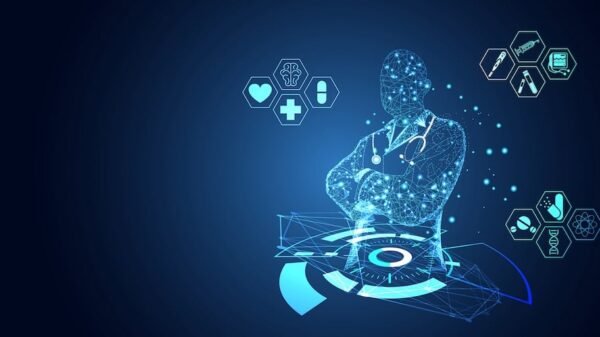The Rise of Wearables and IoMT in Modern Medicine
Wearable technology and the Internet of Medical Things (IoMT) are transforming the healthcare landscape by enabling real-time health monitoring and more proactive patient engagement. These technologies allow for continuous data collection and communication between patients and healthcare providers, significantly improving the management of both acute and chronic conditions.
Understanding the Internet of Medical Things (IoMT)
IoMT refers to a network of connected medical devices and applications that collect, analyze, and transmit health data over the internet. This ecosystem includes wearables like smartwatches, biosensors, glucose monitors, and implantable devices—all designed to track physiological parameters and support medical decision-making. The result is a more responsive, data-driven approach to care.
Real-Time Health Monitoring Becomes the Norm
One of the most significant benefits of wearable technology and IoMT is the ability to monitor health metrics in real time. Devices track heart rate, blood pressure, oxygen saturation, sleep patterns, and even ECGs, alerting both users and clinicians to potential concerns immediately. This constant stream of information facilitates early interventions and timely adjustments to treatment plans.
Early Detection of Health Issues
IoMT and wearables are proving particularly effective in the early detection of conditions such as arrhythmias, sleep apnea, and even COVID-19 symptoms. For example, wearable pulse oximeters and thermometers can identify subtle changes before noticeable symptoms arise. These insights allow for early diagnosis, better outcomes, and reduced strain on emergency services.
Empowering Patients to Manage Their Health
By giving individuals access to their own health data, wearable devices encourage patients to take a more active role in their well-being. Many apps and platforms connected to these devices provide feedback, set wellness goals, and deliver personalized recommendations. This sense of ownership leads to improved compliance with treatment regimens and lifestyle modifications.
Chronic Disease Management Transformed
Patients with chronic illnesses such as diabetes, hypertension, and heart disease are among the biggest beneficiaries of IoMT. Continuous glucose monitors (CGMs), blood pressure cuffs, and smart inhalers allow for remote and accurate tracking of symptoms. Healthcare providers can adjust treatments in real time, reducing the need for frequent clinic visits and hospitalizations.
Integrating IoMT Into Clinical Workflows
For wearable and IoMT technologies to be most effective, they must be integrated into clinical workflows. Many healthcare providers now use centralized platforms that aggregate data from multiple devices, enabling seamless communication with electronic health records (EHRs). This integration allows physicians to view real-time updates and make more informed decisions during consultations.
Enhancing Post-Surgical and Elderly Care
Wearables are also playing a growing role in post-operative monitoring and elder care. After surgery, patients can be discharged earlier with wearable devices that track vital signs and mobility, allowing doctors to monitor recovery remotely. For elderly patients, fall detectors, heart monitors, and medication adherence tools enhance safety and promote independent living.
Security and Privacy in a Connected World
With the expansion of IoMT comes an increased focus on data security and patient privacy. These devices generate large volumes of sensitive information, necessitating robust cybersecurity measures. Developers and healthcare providers are implementing encryption, authentication protocols, and compliance with regulations like HIPAA to safeguard patient data.
Artificial Intelligence Amplifies IoMT Capabilities
Artificial intelligence (AI) enhances IoMT by analyzing vast datasets and generating actionable insights. Machine learning algorithms detect patterns, forecast health deterioration, and personalize treatment suggestions. AI-powered platforms can also reduce false alerts and improve the accuracy of diagnoses by contextualizing data from multiple sources.
Bridging Healthcare Gaps in Remote Areas
Wearable devices and IoMT are proving particularly useful in remote and underserved regions, where access to healthcare professionals may be limited. By using connected devices, patients can receive continuous monitoring and periodic virtual consultations, ensuring that care is not compromised by geographical barriers.
The Role of IoMT in Public Health and Research
Beyond individual care, IoMT devices contribute to population health monitoring and medical research. Aggregated anonymized data can be used to track disease trends, evaluate treatment effectiveness, and support clinical trials. This data-driven approach enhances the scalability and reach of public health initiatives.
Commercial and Consumer Market Expansion
Tech giants and health startups are increasingly entering the wearables and IoMT space, bringing innovation and scale. From the Apple Watch and Fitbit to medical-grade devices like the Dexcom G7, the consumer market is merging with clinical-grade technology, creating devices that are both user-friendly and medically reliable.
Regulatory Support and Industry Standards
To ensure quality and interoperability, regulatory bodies are developing standards and frameworks for IoMT devices. In the U.S., the FDA provides guidance on digital health tools, while international organizations are collaborating on global standards. This regulatory clarity is crucial to fostering trust and encouraging innovation.
Future Outlook: Personalized, Predictive Healthcare
As wearable and IoMT technology continues to evolve, the future of healthcare will become even more personalized and predictive. Integration with genomics, AI, and telemedicine will enable a healthcare system that not only treats illness but anticipates it. This evolution holds the promise of reducing healthcare costs while enhancing outcomes on both an individual and systemic level.
Conclusion: A Connected Future for Health
Wearable technology and the Internet of Medical Things are revolutionizing how healthcare is delivered and experienced. By enabling continuous monitoring, supporting early intervention, and empowering patients, these innovations mark a shift toward a smarter, more proactive, and patient-centered model of care. As adoption grows, the promise of truly connected health becomes increasingly attainable.



































